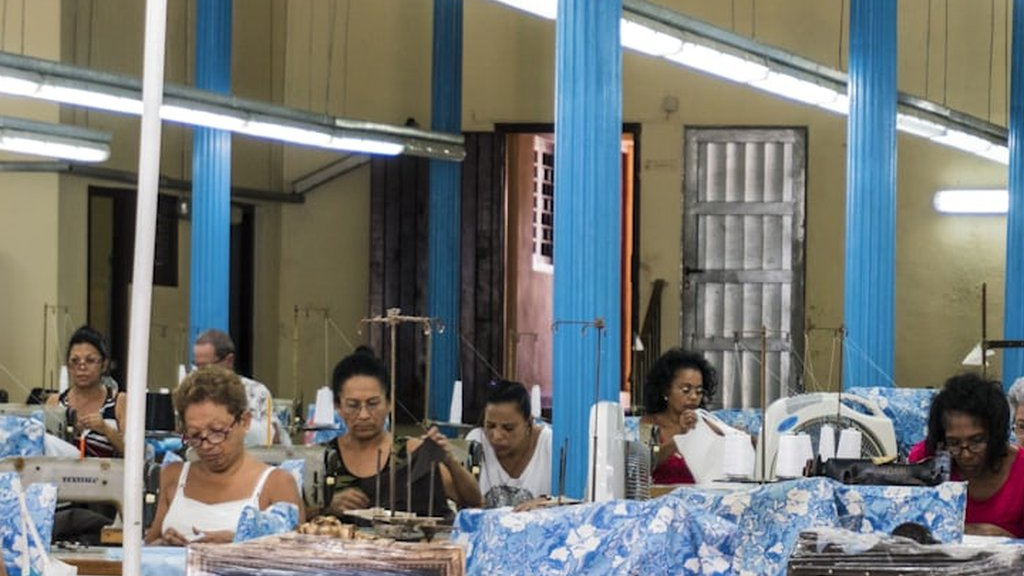 Fashion companies are facing a stark reality: two-thirds of supply chain risks stem from social issues, a new study reveals. RepRisk data highlights a surge in human rights violations and poor working conditions, emphasizing the critical need to address the “S” in ESG. As the industry grapples with escalating legal and reputational threats, the complexity of global supply chains intensifies, exacerbated by factors like climate change and geopolitical tensions. With regulatory scrutiny mounting and consumer expectations evolving, companies must prioritize transparency and ethical practices to navigate these challenges.
Fashion companies are facing a stark reality: two-thirds of supply chain risks stem from social issues, a new study reveals. RepRisk data highlights a surge in human rights violations and poor working conditions, emphasizing the critical need to address the “S” in ESG. As the industry grapples with escalating legal and reputational threats, the complexity of global supply chains intensifies, exacerbated by factors like climate change and geopolitical tensions. With regulatory scrutiny mounting and consumer expectations evolving, companies must prioritize transparency and ethical practices to navigate these challenges.
The Dominance of Social Risks in Fashion Supply Chains
The study by RepRisk underscores a concerning trend in the fashion industry: social risks, such as human rights violations and poor working conditions, account for a significant majority of supply chain incidents. This revelation demands a shift in focus towards addressing these social issues, not just as a moral imperative but also as a strategic necessity. Companies like Valentino must recognize that neglecting social risks can lead to severe legal and reputational consequences, as seen in recent cases involving luxury brands. By proactively engaging with suppliers and conducting thorough audits, companies can mitigate these risks and enhance their sustainability credentials.
The surge in social risks within fashion supply chains is a wake-up call for industry players, urging them to reevaluate their sourcing practices and supplier relationships. Valentino, along with other fashion brands, must prioritize transparency and ethical sourcing to ensure compliance with evolving regulatory standards and meet the expectations of increasingly conscientious consumers. Failure to address social risks not only jeopardizes brand reputation but also exposes companies to financial liabilities, making it imperative for organizations to integrate ESG considerations into their core business strategies.
Complexity of Global Supply Chains Amid External Pressures
As global supply chains in the fashion industry become more intricate, companies like Valentino face mounting challenges exacerbated by external factors such as climate change, geopolitical conflicts, and trade uncertainties. The interplay of these elements heightens volatility, leading to increased input costs and disruptions in business operations. To navigate this complexity, organizations need to adopt a holistic approach to risk management, integrating environmental, social, and governance considerations into their supply chain strategies. By proactively addressing these external pressures, companies can enhance resilience and adaptability in an ever-changing business landscape.
The evolving legislative landscape further complicates the operational environment for fashion companies like Valentino. With countries like Australia, the United Kingdom, and Germany strengthening their regulations on modern slavery and supply chain due diligence, organizations must stay vigilant and ensure compliance with these stringent requirements. The impending implementation of the European Union's corporate sustainability due diligence directive underscores the increasing scrutiny on companies to uphold ethical standards throughout their supply chains. Valentino and its peers must embrace transparency and accountability to navigate the evolving regulatory framework effectively.
Leveraging Data and Technology for Risk Mitigation
In the face of escalating supply chain risks, leveraging data and technology becomes imperative for companies like Valentino to enhance risk mitigation efforts. Tools like those offered by RepRisk, combining human expertise with machine learning and AI, enable organizations to sift through vast amounts of data to identify potential risks proactively. By harnessing real-time data insights, companies can gain clarity and transparency in their supply chain operations, enabling them to address risks efficiently and drive operational efficiency. Embracing data-driven approaches not only helps companies navigate the complexities of the fashion industry but also positions them as leaders in sustainable and responsible business practices.
Conclusion
In a landscape fraught with social risks, fashion companies like Valentino must heed the call for transparency and ethical practices to safeguard their reputation and bottom line. As external pressures mount and regulatory scrutiny tightens, prioritizing ESG considerations is no longer optional but imperative. By leveraging data and technology for proactive risk mitigation and embracing sustainable sourcing practices, organizations can not only navigate the complexities of global supply chains but also emerge as leaders in responsible business conduct. The time for action is now, as the industry stands at a critical juncture where sustainability and ethicality are not just buzzwords but fundamental pillars of success.